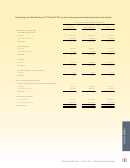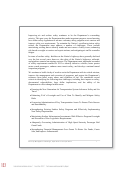Performance And Accountability Report - Fiscal Year 2013 - Federal Aviation Administration - U.s. Department Of Transportation Page 136
ADVERTISEMENT
 1
1  2
2  3
3  4
4  5
5  6
6  7
7  8
8  9
9  10
10  11
11  12
12  13
13  14
14  15
15  16
16  17
17  18
18  19
19  20
20  21
21  22
22  23
23  24
24  25
25  26
26  27
27  28
28  29
29  30
30  31
31  32
32  33
33  34
34  35
35  36
36  37
37  38
38  39
39  40
40  41
41  42
42  43
43  44
44  45
45  46
46  47
47  48
48  49
49  50
50  51
51  52
52  53
53  54
54  55
55  56
56  57
57  58
58  59
59  60
60  61
61  62
62  63
63  64
64  65
65  66
66  67
67  68
68  69
69  70
70  71
71  72
72  73
73  74
74  75
75  76
76  77
77  78
78  79
79  80
80  81
81  82
82  83
83  84
84  85
85  86
86  87
87  88
88  89
89  90
90  91
91  92
92  93
93  94
94  95
95  96
96  97
97  98
98  99
99  100
100  101
101  102
102  103
103  104
104  105
105  106
106  107
107  108
108  109
109  110
110  111
111  112
112  113
113  114
114  115
115  116
116  117
117  118
118  119
119  120
120  121
121  122
122  123
123  124
124  125
125  126
126  127
127  128
128  129
129  130
130  131
131  132
132  133
133  134
134  135
135  136
136  137
137  138
138  139
139  140
140  141
141  142
142  143
143  144
144  145
145  146
146  147
147  148
148  149
149  150
150 SUMMARY OF IMPROPER PAYMENTS
The Improper Payments Information Act (IPIA) of 2002 requires agencies to review their programs and activities to identify those
susceptible to significant improper payments. IPIA was amended on July 22, 2010, by the Improper Payments Elimination and Recovery
Act (IPERA) of 2010. IPERA strengthens the requirements for government agencies to carry out cost-effective programs for identifying
and recovering overpayments, also known as “recapture auditing.”
The Office of Management and Budget (OMB) Circular A-123, Appendix C, Requirements for Effective Measurement and Remediation
of Improper Payments provides guidance on the implementation of IPERA. OMB A-123, Appendix C defines an improper payment as any
payment that should not have been made or that was made in an incorrect amount under statutory, contractual, administrative, or other
legally applicable requirements. Incorrect amounts are overpayments or underpayments that are made to eligible recipients (including
inappropriate denials of payment or service, any payment that does not account for credit for applicable discounts, payments that are
for the incorrect amount, and duplicate payments). An improper payment also includes any payment that was made to an ineligible
recipient or for an ineligible good or service, or payments for goods or services not received (except for such payments authorized by
law). In addition, when an agency’s review is unable to discern whether a payment was proper as a result of insufficient or lack of
documentation, this payment must also be considered an improper payment.
FEDERAL AVIATION ADMINISTRATION (FAA) PROCESS
The FAA’s process for complying with IPERA and OMB Circular A-123, Appendix C, consists of the following steps:
1) Review program and activities to identify those susceptible to significant improper payments
2) Obtain a statistically valid estimate of the annual amount of improper payments in programs and activities for those programs
identified as susceptible to significant improper payments
3) Implement a plan to reduce erroneous payments
4) Report estimates of the annual amounts of improper payments in programs and activities and progress in reducing them
For FY 2013 reporting, the FAA conducted the above four-step process for the 12-month period of April 1, 2012 to March 31, 2013.
For FY 2013, we also developed a Do Not Pay Implementation Plan to be in compliance with the Improper Payments Elimination and
Recovery Improvement Act (IPERIA) of 2012 and provided a high-dollar quarterly report to the U.S. Department of Transportation (DOT)
Office of the Inspector General (OIG), OMB, and displayed on DOT website.
I. Risk Assessment
The FAA’s Programmatic Improper Payment Risk Assessment leverages the Assessable Units (AU) Risk Profiles compiled as part of the
ongoing compliance with the FMFIA. This assessment identified the Airport Improvement Program (AIP) as high-risk for FY 2013 due
to the volume of payments made annually, approximately $3.5 billion for AIP, coupled with the fact that federal funds within these
programs are further administrated outside the agency by local governments or airport sponsors. The FAA’s programmatic improper
payment risk assessment leverages the AU risk profiles compiled as part of ongoing compliance with the FMFIA of 1982.
Table 1 lists the high-risk program name and the disbursements population selected for FY 2013 testing.
TABLE 1. HIGH-RISK PROGRAM SELECTED FOR TESTING
Operating Administration
Program Name
FY 2013 Disbursements (Based on Actual Data)
FAA
Airport Improvement Program (AIP)
$3,517,553,509.73
134
|
|
Federal Aviation Administration
Fiscal Year 2013
Performance and Accountability Report
ADVERTISEMENT
0 votes
Related Articles
Related forms
Related Categories
Parent category: Business









